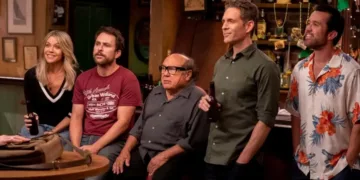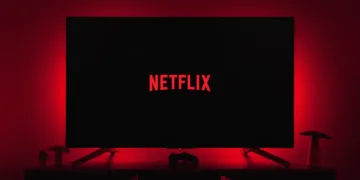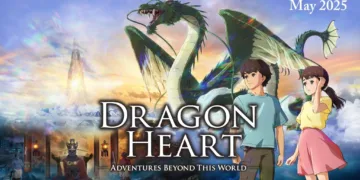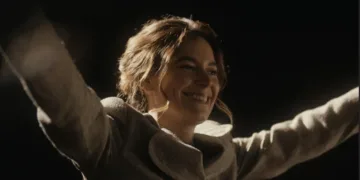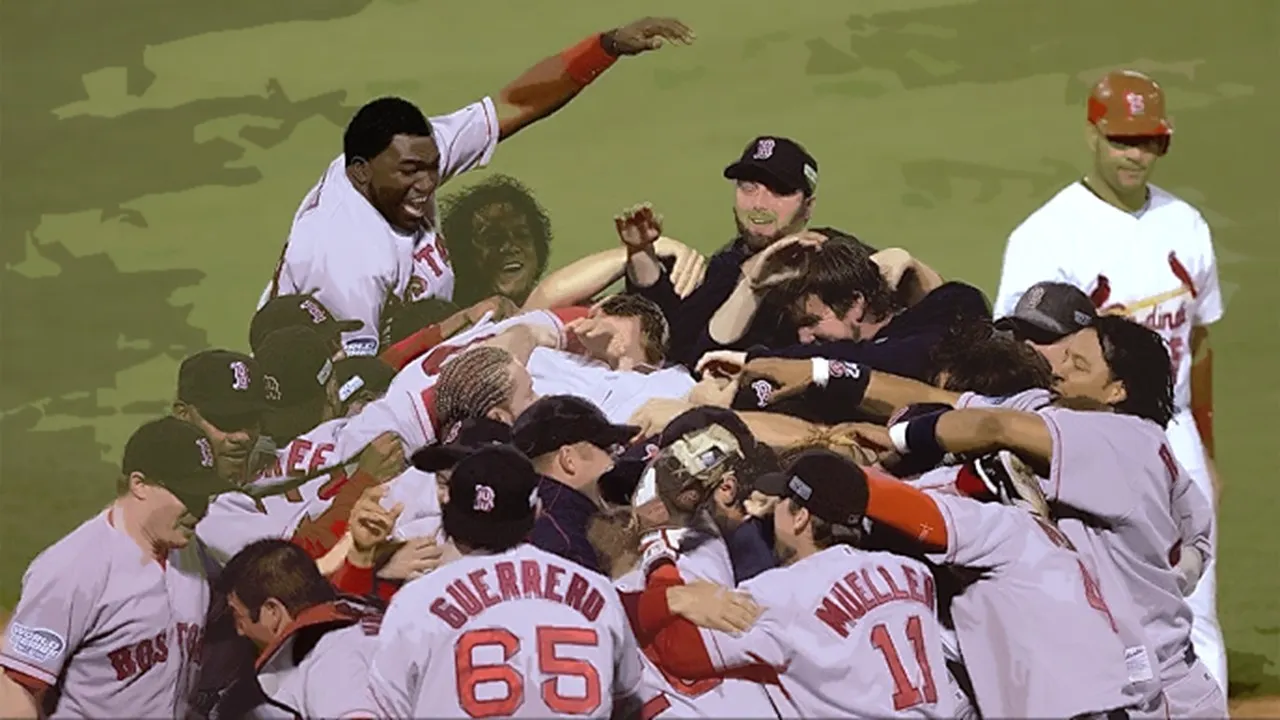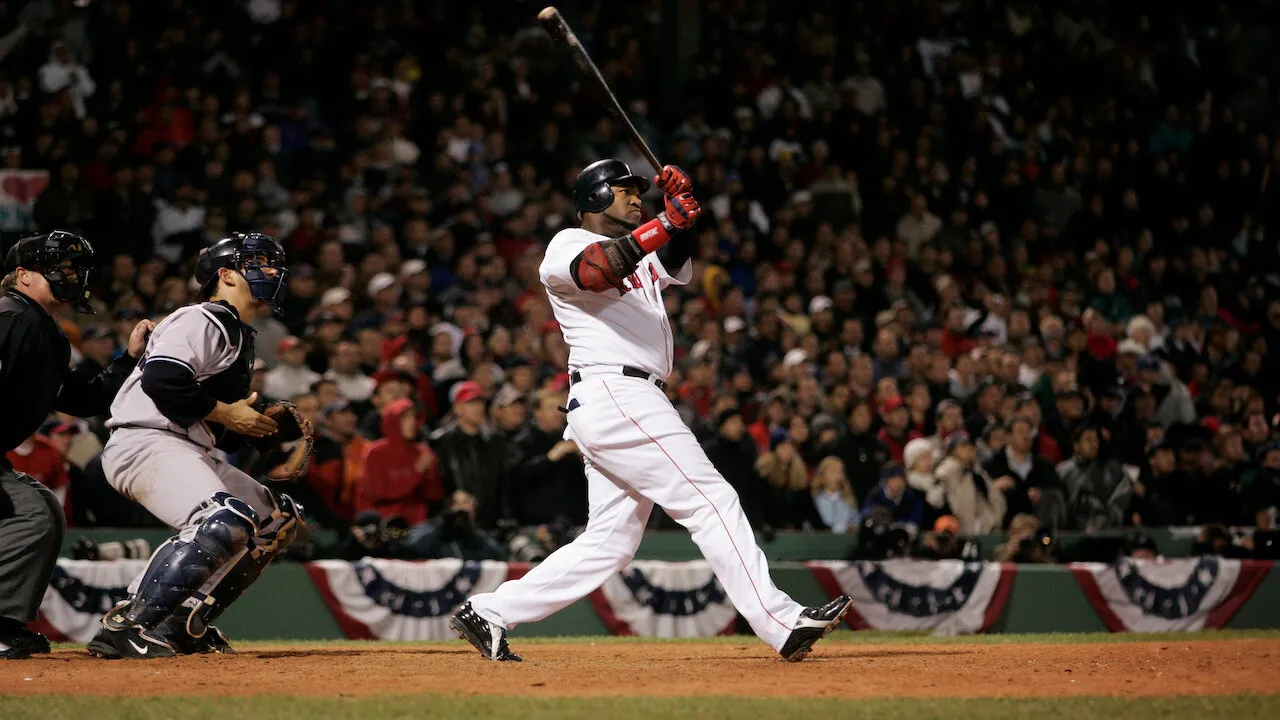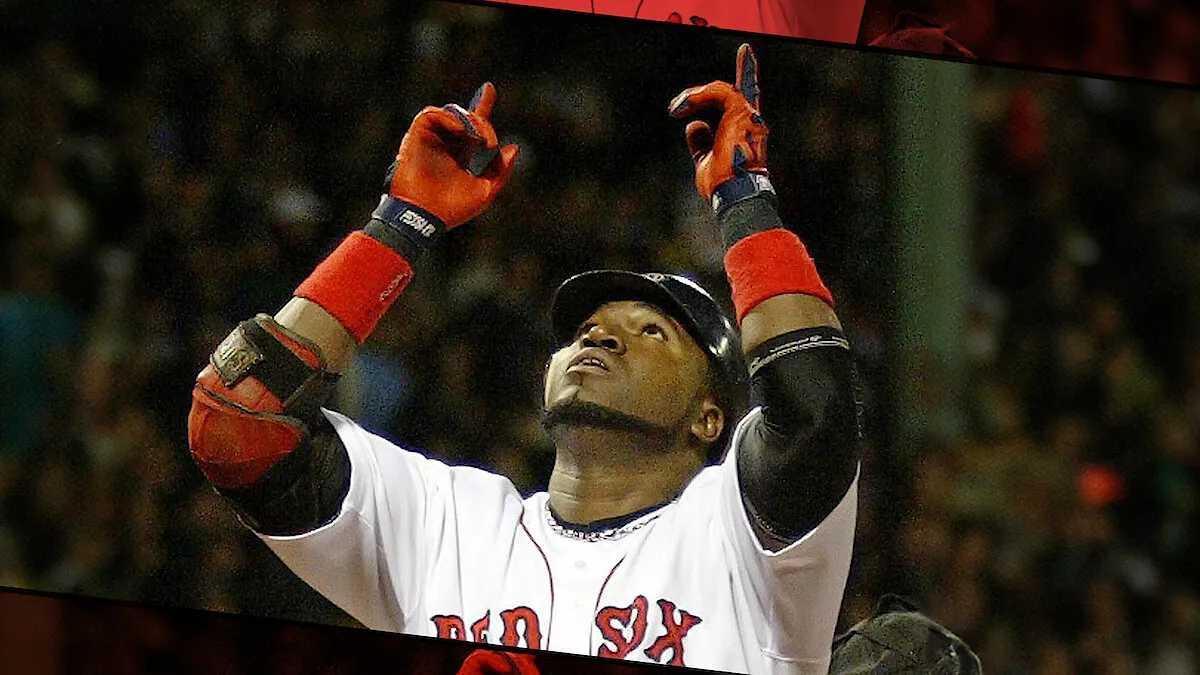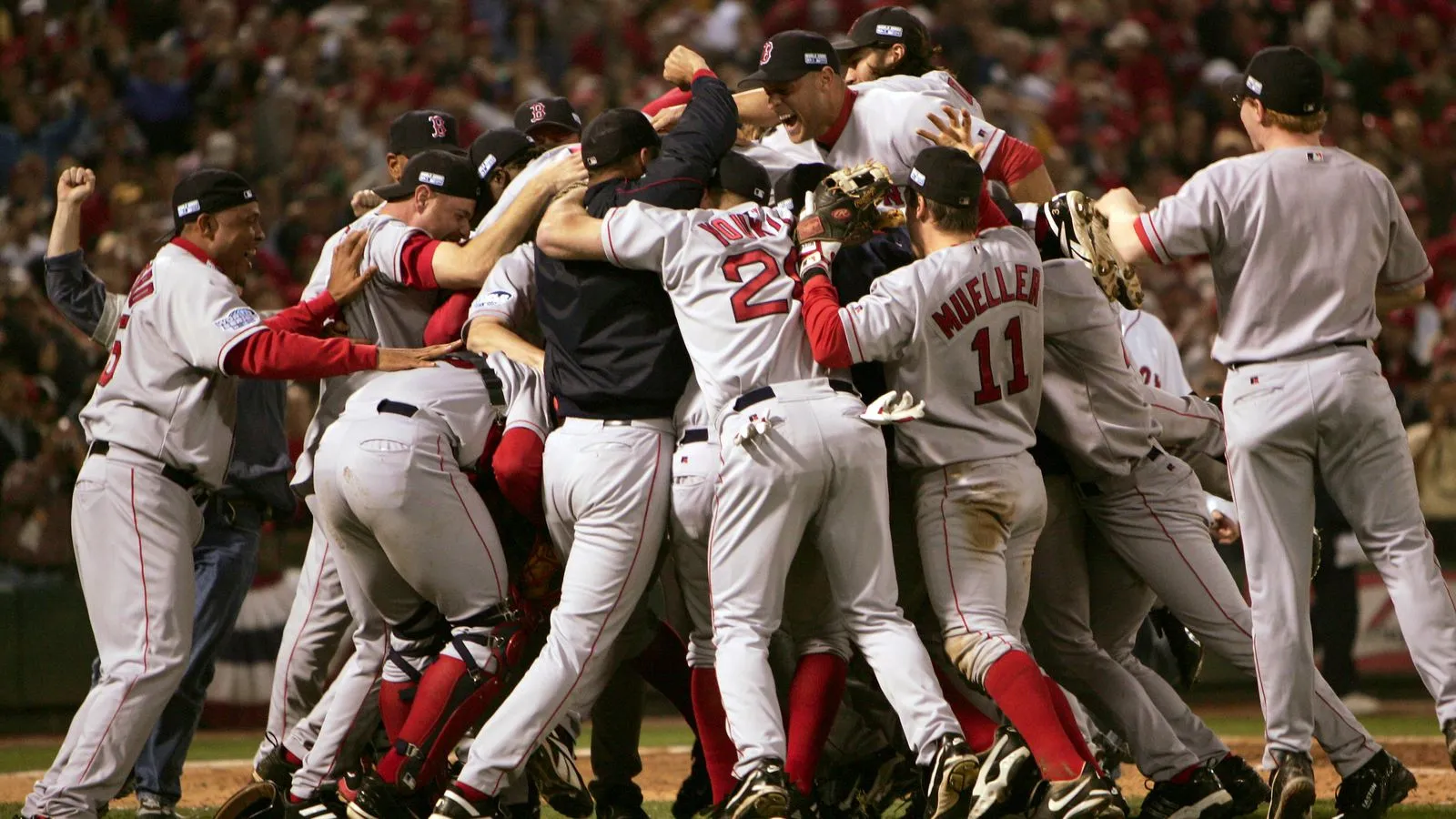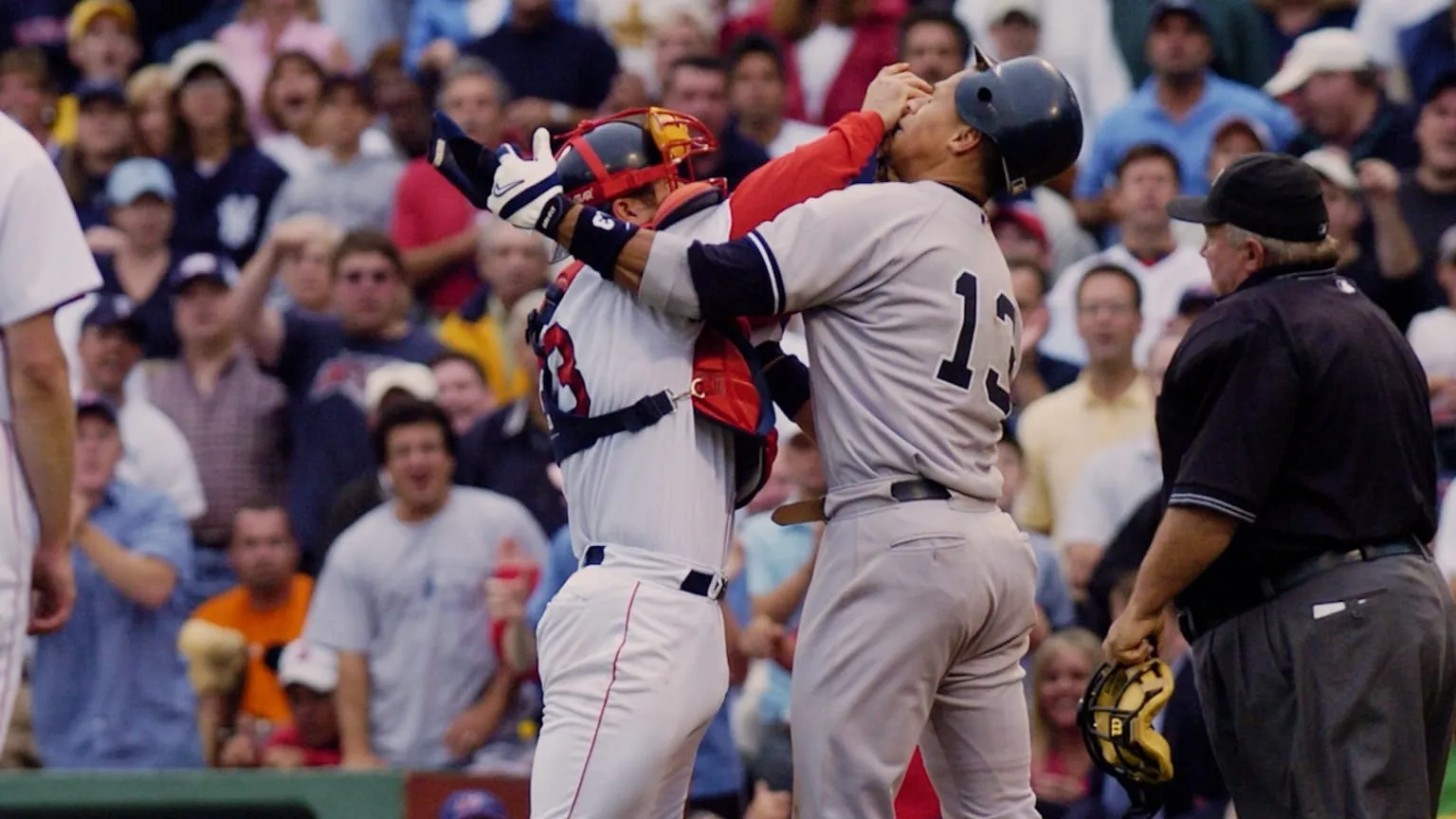The docuseries “The Comeback: 2004 Boston Red Sox” is more than just a baseball story; it also studies resilience against one of baseball’s most famous rivalries. The series explores a team’s psyche affected by the infamous “Curse of the Bambino,” a belief that has plagued fans since Babe Ruth left the Cardinals for the Yankees in 1920.
It is set during the pivotal 2004 season. Viewers experience the emotional ups and downs that shaped an age through a blend of nostalgia and tension.
The series builds up like a well-composed symphony, with each episode as a movement that builds to a satisfying climax. To create a complex narrative, the first episode looks back on past tragedies using old footage and interviews from today.
The second episode shows the dramatic 2004 ALCS, transforming the Red Sox from underdogs to champions. It’s a classic story of defiance that reflects larger social battles. The final episode celebrates the triumph that followed, thinking about its cultural repercussions and how this one moment transcended the diamond, affecting a nation’s collective consciousness.
The Curse and the Rivalry: A Tale of Two Legacies
The so-called “Curse of the Bambino” symbolizes the Red Sox’s long struggle with fate. This curse has been hanging over Boston since 1919 when Babe Ruth was sold to the New York Yankees. It’s like a dark cloud at a summer picnic—not welcome but impossible to ignore.
As if the baseball gods were working against the Red Sox, they often fell short in spectacular ways for 86 years, making them the face of widespread despair. There were heartbreakingly close calls, like in the 1986 World Series when a ground ball went under Bill Buckner’s legs, sealing what seemed like an inevitable fate. These events transformed the team’s narrative into a tragic comedy, where hope was always just out of reach (a cruel turn in the sports drama).
When looking into this curse, one has to think about what it means: does believing in such unfounded beliefs affect the fate of a team? Or does it just show fans’ mental weight, a load that turns into a shared identity? The struggles of the Red Sox became a powerful metaphor for resilience, illustrating how the search for redemption can be both a personal and a collective journey.
The rivalry with the Yankees is the stuff of legends. It’s an epic story full of anger, betrayal, and, dare I say it, poetic justice. This tension has roots as deep as Fenway Park itself, and it is marked by moments that could fill a full season of a Shakespearean drama. With their illustrious history and success, the Yankees frequently represented the heavy weight of expectation and elitism (think of them as Goliath to the Red Sox’s David).
Significant occurrences leading up to the 2004 ALCS, like the famous 1978 one-game playoff, act as turning points in this ongoing narrative. That game, marked by Bucky Dent’s home run, became a rallying cry for Red Sox fans, a reminder of how bitter defeat seemed to last forever. Fast forward to 2003, when the teams met again in a seven-game ALCS filled with tension, brawls, and a palpable sense of inevitability. It felt like everything in baseball was balanced on a razor’s edge, and every pitch brought back memories of past mistakes.
This rivalry is about more than just baseball; it’s a cultural clash that reflects larger social issues like class, identity, and the resilience of the human spirit. The Red Sox’s ultimate triumph in 2004 can be seen as a metaphorical breaking of chains that speaks to everyone who has ever fought against the odds. The curse and rivalry are intertwined this way, creating a rich tapestry of history that speaks to the heart of what it means to struggle, hope, and ultimately overcome.
The 2004 ALCS: A Dramatic Turnaround
The 2004 ALCS started with the New York Yankees claiming victory in a way that reminded me of a heavyweight boxing match. The Red Sox were already on the ropes after three rounds. Game one set the tone with a resounding Yankees win, showcasing their power and poise as they crushed the Red Sox 10–7.
The Yankees’ team rolled to an 8-0 victory in Game Two, just like a well-oiled machine. The curse almost laughed as Game Three came around, and the Red Sox lost by a shocking 19-8 score. It looked like the series was going away faster than a child’s balloon on a windy day.
But the beauty of sports is that they are hard to predict. The remarkable comeback that followed transformed the narrative of despair into one of defiance. When the Red Sox were up against the wall in Game Four, they started channeling past stars’ spirits. They returned from the brink and defeated the opposition 6-4 in a show of grit that would go down in history. Suddenly, the impossible seemed within reach as the moment changed.
This story of comebacks was built on acts that stood out. “Big Papi,” as David Ortiz is affectionately known, emerged as a symbol of resilience in addition to being a player. His clutch hitting, especially in the dramatic Game Four, turned the game around, showcasing his capacity for understatement. Ortiz’s two-run home run in the eighth inning was a moment that transcended the game; it was a sign that hope was still alive.
People also told stories about Curt Schilling. His performance in Game Six, which became known as the “Bloody Sock Game,” showed how far athletes will go to win. Schilling, who was hurt, gave a masterclass in persistence that shut down doubters who didn’t believe he could do it. Because of his toughness, the bloody sock became a powerful symbol of his sacrifice and drive.
Critical game moments, like Ortiz’s walk-off hits and Schilling’s legendary pitching, represented more than just numbers; they represented the return of a franchise known for failing for a long time. These acts highlighted the series’ central theme—the power of belief, both personal and collective. Fans who had been let down for decades now saw their team rewriting a narrative that had held them captive for generations in addition to playing for a championship.
This amazing turn of events wasn’t just a series of games; it was a cultural watershed moment that made people think about the meaning of hope and redemption in sports and life. The Red Sox became a live example of the idea that sometimes, against all odds, the impossible can become reality as they come back from the depths of despair.
Behind the Curtain: Management and Strategy
Theo Epstein, the youngest general manager in MLB history, emerged as a key figure in the Red Sox story. He embodied a blend of impetuous youth and meticulous analysis. His plans weren’t just about putting together a team but also about changing the culture, akin to how a conductor can bring order to a chaotic situation. A radical departure from the “country club” atmosphere that had long defined the franchise, Epstein’s goal was to create a team that relied on high on-base percentages and character.
He was willing to take risks when he made important choices about the team’s roster, like signing David Ortiz and trading Nomar Garciaparra. These moves represented a philosophical shift, not just transaction. Ortiz, a former Twins player, became a key member of the team, and Garciaparra’s exit was a symbol of a break from the past, a release of the weight of history (and maybe the curse). Epstein’s careful balancing act of narrative and intuition ultimately transformed the Red Sox from perennial underdogs into champions, illustrating how analytics can change the narrative arc of an organization.
Terry Francona had a very different way of managing people. He blended old-fashioned baseball knowledge with a more modern, analytical method. In a way, he was the opposite of Epstein. Francona created an atmosphere in the clubhouse that empowered players and allowed them to succeed while keeping a tight rein on strategy. His calm attitude in chaotic times, like the ALCS, became a stabilizing force, akin to a seasoned captain steering a ship through rough seas.
Francona was willing to take risks with his players’ toughness by making important coaching decisions like starting Schilling in Game Six even though he was hurt. Although this choice came with a lot of risk, it showed a deeper theme of trust: Epstein had faith in his players’ skills and the organization’s vision he had set. In-game strategy is similar to leadership in high-stakes situations. Francona could read the team’s emotions and make timely changes, like pulling pitchers or switching up the lineups.
Epstein and Francona created a narrative of resilience that transcended the diamond by transforming a struggling franchise into a symbol of hope and redemption. Their work together teaches that the interplay of strategy, leadership, and trust can produce amazing results in sports and life, even when there is a lot of baggage from the past.
Player Perspectives and Personalities: The Heart of the Team
The talks with the players in “The Comeback” give a real, unfiltered look into a team’s psyche on the brink of change. Players like David Ortiz and Kevin Millar tell stories that capture the essence of friendship and resilience, and there are many highlights.
As Ortiz describes important moments, his contagious charm shines through, telling viewers that success is often a group effort rather than an individual triumph. His leadership style is a blend of jest and motivation, akin to a locker room coach who also serves as the class clown. With his unabashedly irreverent humor, Millar emerges as the glue keeping the team together.
The team’s success depends on these dynamics, which happen when personality meets ability. The players’ open conversations show how a supportive atmosphere fosters resilience. They accept the weight of expectations while also laughing at their mistakes, creating a rich tapestry of emotional complexity. This interplay between players illustrates the significance of community in overcoming hardship, which goes beyond sports.
The cultural effects of these players’ personalities are huge. The carefree mood of Kevin Millar’s leadership serves as a microcosm of the team’s overall change. He is a living example of the idea that joy and stress can coexist, which resonates far beyond the baseball field. “Don’t let us win tonight,” Millar’s famous rallying cry, became a mantra that encapsulated the spirit of defiance against the odds.
Similarly, Ortiz’s background as a Dominican player who had to figure out how to play in Major League Baseball adds to his impact. His journey from uncertainty to fame is akin to the broader narrative of hope for many immigrant athletes, making him a cultural icon in Boston and beyond. Ortiz’s ability to connect with fans on and off the field crosses cultural barriers and shows how sports can bring people from different backgrounds together.
Together, these characters create a narrative full of symbolism, reflecting themes of resilience, identity, and the power of group ambition. The Red Sox symbolized a societal struggle against long-standing narratives of despair and defeat as they battled through the ALCS. They did more than just play baseball. Anyone who has ever faced impossible odds can relate to the players’ stories, demonstrating how the human spirit can triumph over adversity in sports and life.
Cultural Significance and Legacy: Beyond the Diamond
For decades, fans were immersed in a narrative of sorrow, with the “Curse of the Bambino” serving as both a badge of honor and a heavy chain. The Red Sox’s 2004 championship marked a seismic change in the “Red Sox Nation culture.” The triumph over the Yankees disproved this long-standing myth and transformed the psyche of a fanbase that had been through a Sisyphean struggle. If you will, a phoenix rising from the ashes is how the narrative suddenly changed from one of constant disappointment to one of resilience and hope.
These effects had big cultural effects. Fans who used to wear their pain like an old coat were now living in the glory of their success. It was like a wall had broken, and joy and celebration poured into the streets of Boston, making breathing impossible. This victory brought together generations of fans who had been distant from each other for decades because of pain. The franchise symbolized triumph over adversity and redefined what it meant to be a Red Sox fan, infusing the city with a newfound confidence.
Beyond the confines of Fenway Park, the 2004 season changed Major League Baseball forever. They won their first championship in 86 years, setting a new standard for how powerful analytics and strategy management can be in sports. Other teams started to use sabermetrics in their strategies to copy Epstein’s data-driven method, which is still a trend today.
There is a common theme—the triumph of the underdog and the rewriting of historical narratives—when comparing this comeback to other important sports victories, like the New York Giants’ win over the Patriots in Super Bowl XLII or the Chicago Cubs’ 2016 comeback. These times have a profound impact on us, constantly reminding us that resilience in sports (and in life) can lead to amazing results.
In the end, the 2004 Red Sox redefined not only their fate but also the cultural fabric of baseball. Their journey guided players and fans, illustrating how history’s barriers can be broken down one game at a time.
Conclusion: A Tapestry of Triumph and Transformation
Although “The Comeback” is about a baseball season, it is also a deep look at resilience, community, and the human spirit. The narrative is profoundly affected by important themes like the struggle against historical burdens and the transformative power of leadership.
From the depths of despair, encapsulated in the curse, to the heights of success, the series captures the essence of the Red Sox’s journey, reflecting the universal search for redemption. We are reminded that triumph frequently comes from the ashes of failure by the interplay of personal and collective narratives, which create a rich tapestry that reflects larger societal issues.
This series is akin to a pilgrimage for Red Sox fans because it allows them to relive a culturally significant moment. Beyond the confines of fandom, though, it has attraction.
People who like sports, in general, will find value in the subtleties of strategy, the way players interact with each other, and the emotional undercurrents that make up the human experience in professional sports. Whether you’re a die-hard fan or a casual observer, “The Comeback” serves as a powerful reminder of why we love sports: they show our struggles, victories, and shared humanity.
The Review
The Comeback: 2004 Boston Red Sox
"The Comeback" skillfully combines community, redemption, and resilience themes, transforming the Red Sox's historic 2004 season into a gripping narrative that resonates far beyond baseball. The series is interesting to die-hard fans and casual viewers because it shows interesting player views and details cultural significance. Anyone who values the power of sports should watch it because it serves as a powerful reminder of how the human spirit can triumph over adversity.
PROS
- Engaging storytelling that captures the emotional highs and lows.
- Insightful player interviews that add depth to the narrative.
- Strong exploration of themes like resilience and community.
- Cultural significance that resonates beyond the sport.
- High production quality with compelling visuals and sound.
CONS
- May appeal primarily to baseball fans, limiting broader interest.
- Some pacing issues in transitioning between key events.
- Occasional reliance on nostalgia, which might not resonate with all viewers.















